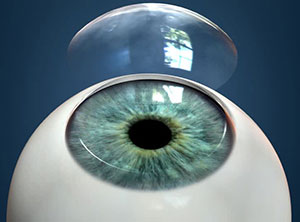Or call
866-945-2745

What is a Cornea?
The cornea is your eye’s clear protective outer layer (like a windshield) that serves two important functions: a barrier protecting your eye against dirt, germs, UV rays, and more. Interestingly, its the only transparent tissue in the body and filters light rays entering your eye.
The cornea’s surface shape determines how light rays are bent (or refracted) as they enter your eye. If the shape is too steep, too flat, or not completely round, it can cause problems such as nearsightedness, farsightedness, or astigmatism.













